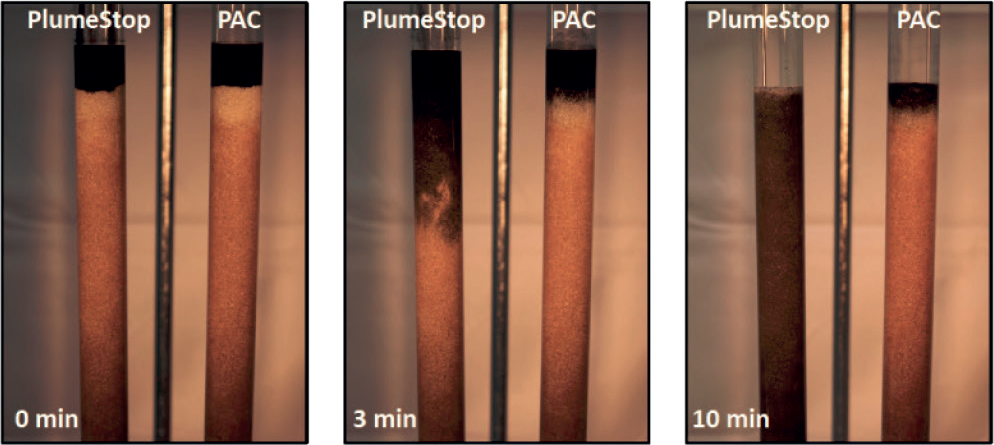
The Difference Between Liquid Activated Carbon (LAC) and PAC
Negligible Impact on Existing Monitoring Wells
Does the use of PlumeStop® generate preferential pathways in the subsurface that could compromise existing monitoring wells?

No. PlumeStop is not a powdered activated carbon-based product that is "fractured" or "fracked" into the subsurface under high-pressure. Such powdered activated carbon fracking can cause preferential pathways into existing monitoring wells. This results in the well and filter pack being permanently pressure-packed with carbon. Unlike wells impacted with other substrates like bioremediation amendments or chemical oxidants, powdered activated carbon is comprised of large insoluble particles (>30 micrometers in diameter) that will remain lodged in the filter pack indefinitely. Sampling of these monitoring wells can give positive results for site treatment even though the surrounding subsurface area may be relatively untreated.
PlumeStop is a colloidal activated carbon suspension, with particles 10x smaller than powdered activated carbon (<2 micrometers in diameter). PlumeStop flows into the subsurface under moderate to low pressure or gravity application, generating no preferential pathways or fractures in the subsurface. If PlumeStop enters a monitoring well, it is an indication that the PlumeStop is moving through a natural flux zone that happens to be intercepted by the existing monitoring well.
If PlumeStop visibly has entered an existing monitoring well is that well now compromised?
No. PlumeStop is not like powdered activated carbon products that disrupt the filter pack around the well screen, irreversibly filling the filter pack pores with powdered activated carbon. PlumeStop particles are colloidal and move freely into and out of the filter pack as does the natural flow of groundwater. PlumeStop entering the filter pack material will coat that portion of the filter pack adjacent to the flux zone with a thin layer of PlumeStop particles. Due to the much lower surface area available on the filter pack material, the amount of PlumeStop retained there should be substantially less than would have been left behind on the native aquifer material had the well not been present. Thus, sampling of the water from within the well should represent a conservatively low impact from the PlumeStop.
MOBILITY THROUGH SOIL: PLUMESTOP VS. PAC

I have just injected PlumeStop on my site and a monitoring well has turned a grey-black color. Should I sample that well now?
No. As long as free PlumeStop is visibly suspended within the well water it is best to wait until the well clears up naturally. This can be facilitated by flushing clear water into the well which will push free particles back into the aquifer. Wait a reasonable period of time before sampling and purging to ensure that the sample volume collected is indicative of aquifer waters.
Are there additional measures that can be taken to ensure that no PlumeStop gets into existing monitoring wells in future PlumeStop applications?
Yes. Although it generally is not warranted, additional measures can be taken at the time of PlumeStop application to ensure that existing monitoring wells are not impacted by PlumeStop.
Clear water flush
REGENESIS® has as flushing protocol that can be implemented at the time of injection to flush any PlumeStop impacted monitoring wells. In this procedure a calculated volume of clear water is fed into the well to push any free particles out of the well bore annulus and filter pack back into the aquifer formation. It is best to gain regulatory approval for the clear water flush prior to implementation.
Packing off of well screen
As an additional measure of assurance that no significant amount of PlumeStop enters existing monitoring wells, it is also possible to pack off the screen interval of the monitoring well. With this procedure, the well annulus is filled with a balloon packer effectively sealing the screen interval of the monitoring well during nearby PlumeStop application activities.
This serves to ensure that no significant PlumeStop material can enter the well system. While this field process is available by REGENESIS Remediation Services, it is considered unnecessary due to the colloidal nature of PlumeStop and low-pressure utilized in application.